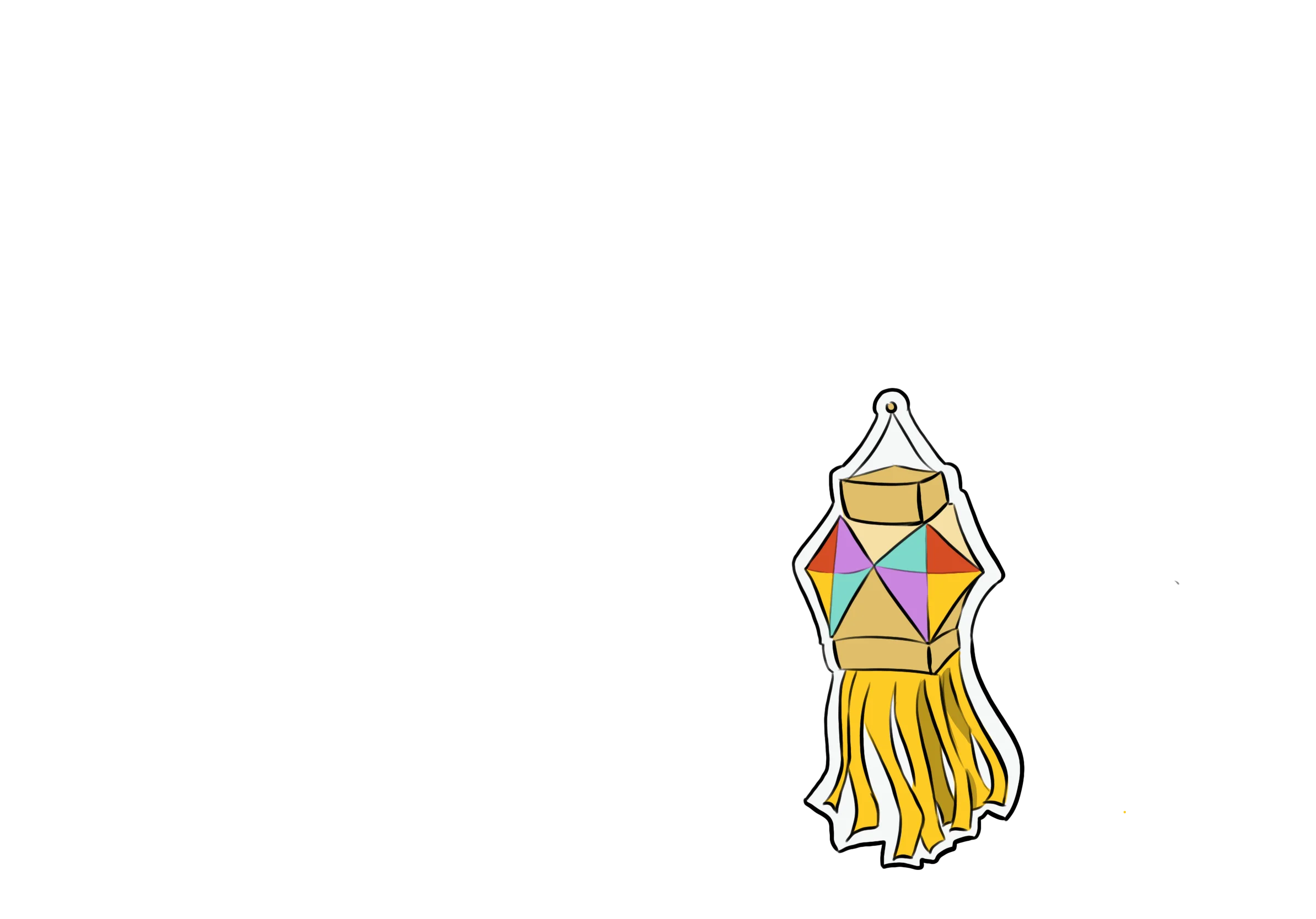Inside Diwali: lamps, lights, and longing
November, 2025
Graphics: Charley Hu
Diwali, the Festival of Lights, is one of the most vibrant and meaningful holidays for many Indian people. At this time of the year, my house is always filled with loud chatter, and sweet smells throughout the air. The origin story of Diwali itself varies regionally and the beliefs that one follows. The first version, typically believed by people in the northern part of India, describes the return of Prince Rama, the righteous prince who returns back to his kingdom of Ayodhya after 14 years of exile and defeats the demon king Ravana. After his arrival, his subjects all light lamps to celebrate the arrival of their king. The second story, believed by many living in Southern India, tells of the defeat of the demon king Narakasura by Lord Krishna and his wife Satyabhama. The third story states that by lighting lamps, you’re inviting the Goddess Lakshmi, the goddess of wealth, into your home to bring prosperity and blessings. No matter the version, the meaning of Diwali always remains the same: there will always be light where there is darkness.
Diwali is a time when my home overflows with people, incense, and delicious smells from the food. My family celebrates the festival in many ways, ranging from actions with underlying spiritual meaning, to pure enjoyment.
The spiritual heart of the evening begins with a quiet ritual. We gather for a small, personalized puja (prayer ceremony) right at home. Every corner of the house is illuminated with dozens of tiny diyas (or oil lamps). Usually, diyas are made of clay, either bought, painted, or molded at home. As we kneel together to offer prayers for prosperity, health, and well-being, we take advantage of this ritual as an intimate moment of reflection to start the holiday off. Following the ceremony at home, we always make a trip to the temple, dressed in our newest and most colorful traditional clothes, wearing fun pieces of jewelry, and sometimes flowers in our hair. The temple is always bustling with people during this time of year and decorated with flowers or other decorations, creating a joyous atmosphere.
After the spiritual observances, the celebration spills out into the neighborhood. Sharing joy is a core part of Diwali, which my family commits to by meticulously preparing and handing out sweets, trays of kaju katli, ladoos, and barfi to every one of our neighbors. This tradition of exchanging food connects everyone within the community.
The day ends with a big celebration. We gather with an excited group of friends and family outside for the grand finale of the day: lighting firecrackers and colorful fireworks. It’s a spectacular show of collective joy, watching the night sky ignite in brilliant gold, red, and green bursts. At the end of the night, everyone, despite smelling like smoke, is full of laughter and joy. For us, and many Indian-Americans, Diwali is one of the most important times of the year. In places away from India, it’s one of the few holidays that anchors many immigrants to their culture back home.